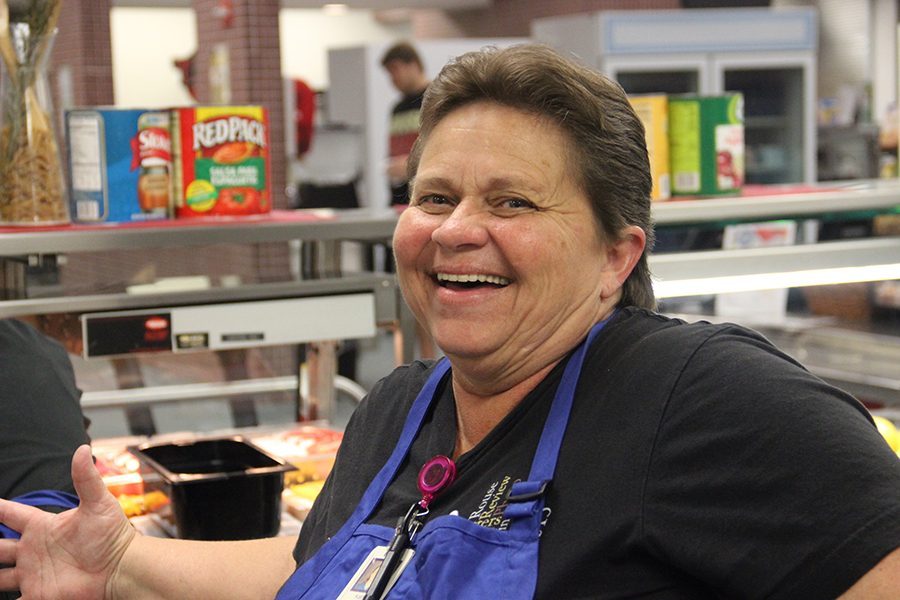Lunch Changes: Students adjust to new lunch schedule
Food Service Manager, Kathy Bell
September 11, 2018
While some students and staff are shaking their heads at the changes to the lunch schedule, the change definitely has pros that shouldn’t be overlooked. This year, our school hopped on the train of removing C-lunch and only use an A and B-lunch schedule. However, B-lunch took over the time frame of C-lunch, so it’s more like we removed B-lunch.
In previous years, as returning Raiders know, A-lunch immediately followed Advocate, B-lunch split third or seventh period in half, and C-lunch was the last 30 minutes of third and seventh period. This year, the schedule no longer has a lunch that splits the lunch class period. Instead, A-lunch proceeds Advocate, and B-lunch occurs at the end of third and seventh period. It seems confusing in writing, but this schedule is actually more efficient and simplistic than a three-lunch schedule.
All parties involved should be in favor of this change, and because of the decline in population at Rouse, a third lunch is simply unnecessary.
One major benefit of removing a lunch is that it helps the school financially. We now can make a more accurate count of lunches per students who eat cafeteria food. This allows the school to waste less food. Another thing students may not take into consideration is the benefits it has on the cafeteria staff. Rather than preparing for and cleaning up lunches three times a day, they now only have to worry about two lunches, which allows them to get paperwork done and more time to prepare hot food between the two lunches. So, while some students may complain about standing in a slightly longer line, they should think about the people who are behind those lines serving them.
Let’s be real here, some students liked the interrupting B-lunch that split their class, but it was too complicated. Teachers had to change their lunch to accommodate testing and other important class activities that could not be interrupted. True, it did provide a brain break, but it also wasted more class time. Returning to one class twice forced a teacher to spend more time redirecting and getting a class in the loop after each entrance. So, removing the concept was definitely helpful.
Some may say the cafeteria is too crowded, there aren’t enough seats, and the lines are too long. However, there are plenty of seats. Students can not expect to find 12 seats together for all of their friends at one table, but a simple solution is to not leave gaps between students. Students who want to sit together can enter the cafeteria line together. The lines have also been monitored, and faculty members report that after about 15 minutes, there are no longer any students in line, leaving time to easily grab lunch and eat.
The change to our lunch schedule has definitely caused some shifts from the previous routine, but it has had a positive impact on our school and should continue to do so. Students are making adjustments every day, and soon, these beneficial changes will become part of everyone’s regular routine and the new normal.



